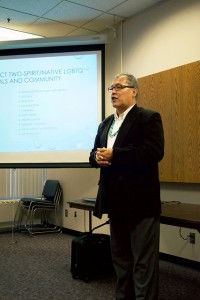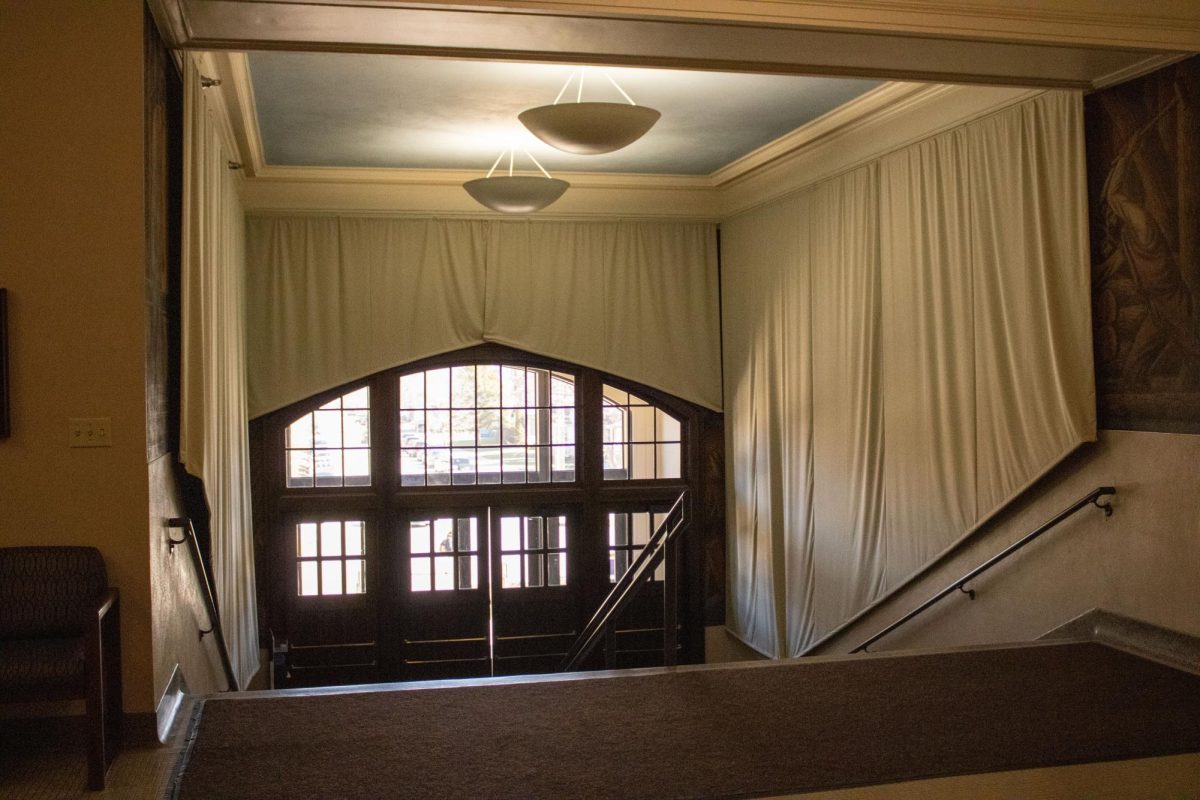Olivia Volkman-Johnson / Winonan

Lenny Hayes started his presentation at Winona State University with a documentary featuring “the true story of a Navajo boy who was also a girl.” The documentary marked the start of a discussion about the tradition of two-spirit people, led by Hayes, MA, LADC.
Hayes, the owner and founder of Tate Topa Consulting, LCC in St. Paul, utilized his experiences as a Dakota, two-spirit man in his two-workshop on the impact of intergenerational trauma on the two-spirit community on Friday, Sept. 9 in Winona State’s Kryszko Commons.
According to the Dancing to Eagle Spirit Society, two-spirit people are individuals who carry both male and female spirits. Two-spirit people were highly revered and honored in their tribal communities and were believed to be people of great power.
An important part of discussing trauma within this community is knowing about the community itself and the history of two-spirit people, according to Hayes.
Cindy Killion, a professor in the mass communications department and a self-identified member of the Cherokee nation, said two-spirit individuals have been around long before European colonization.
At the time, European colonists mistakenly made assumptions about the sexual orientation and gender identity of these individuals, according to Killion.
“So, because of suppressive practices and policies by the Europeans, we’ve lost that history and we’ve lost that tradition,” Killion said.
Although the tradition of two-spirit people has been around for generations, the term ‘two-spirit’ is a newer concept. Hayes explained in 1990, several Native, two-spirit representatives came up with a widely recognized term for those who identified as having both male and female spirits.
“There’s over 560 tribes, over 200 languages and so they wanted to come up with one term and that’s where ‘two-spirit’ comes from,” Hayes said.
Within tribes there are different names for two-spirit people, Hayes said. In Dakota, ‘winkte’ is used to describe two-spirit people, which Hayes has reluctantly accepted.
“I grew up on a reservation [where] that term was derogatory, and I grew up hating that word because I was bullied and I was harassed,” Hayes said.
Finding an agreed upon term is only the tip of the iceberg when it comes to the challenges two-spirit people face, Hayes said. The focus of his workshop was intergenerational trauma, or trauma that is passed down from generation to generation.
Hayes explained that much of the trauma faced by two-spirit people and Native people in general, started with sexual and physical abuse at the hands of European colonists. Then, as the U.S. began to form into a nation, many Native children were taken from their homes and enrolled in boarding schools.
The boarding school era, as Hayes called it, was a time in which many two-spirit individuals were forced into binary gender roles and denied the right to express their cultural identity and traditions.
As a product of this era, Hayes stressed the numerous negative effects of these schools and their ideology on Native people—most notably on Native two-spirit individuals.
“It changed our way of thinking and how we view two-spirit people,” Hayes said.
Two-spirit individuals are often alienated from more than one community—including the LGBTQ community, many Native communities and cisgender (a person who identifies with the gender they were assigned at birth), heterosexual non-Native communities—due to a lack of understanding of the tradition.
This has caused an increased risk of depression, suicide, discrimination, sex addiction, abuse, homelessness and several other factors among two-spirit individuals.
Hayes, along with his colleagues, hopes to collect data from the Midwest within two-spirit communities in the coming years, in addition to his work advocating for two-spirit rights.
“In our tribal communities, we didn’t question when someone identified—instead, we honored them,” said Hayes.
For now, both Killion and Hayes said they believe starting a discussion on two-spirit individuals is the best way to decrease misunderstandings surrounding this tradition and help revive it.
“I think it’s important for non-Native people to know what that tradition was and how it plays a role in tribes and how we’re trying to recover that tradition,” Killion said.
“My hope is that people will understand two-spirit people and the issues that impact the community,” Hayes said. “Not all two-spirit people are bad.”
-By Olivia Volkman-Johnson








































